 | TODAY IN SCIENCE HISTORY NEWSLETTER - 14 JANUARY |
| Book of the Day | ||
|
| Quotations for Today | |
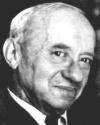 | If a mathematician wishes to disparage the work of one of his colleagues, say, A, the most effective method he finds for doing this is to ask where the results can be applied. The hard pressed man, with his back against the wall, finally unearths the researches of another mathematician B as the locus of the application of his own results. If next B is plagued with a similar question, he will refer to another mathematician C. After a few steps of this kind we find ourselves referred back to the researches of A, and in this way the chain closes. |
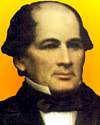 | There is a river in the ocean. In the severest droughts it never fails, and in the mightiest floods it never overflows. Its banks and its bottom are of cold water, while its current is of warm. The Gulf of Mexico is its fountain, and its mouth is in the Arctic Sea. It is the Gulf Stream. |
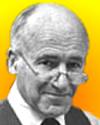 | Science is what scientists do, not what nonscientists think they do or ought to be doing. Wetenschap is wat wetenschappers doen. |
| Quiz | |
| Before you look at today's web page, see if you can answer some of these questions about the events that happened on this day. Some of the names are very familiar. Others will likely stump you. Tickle your curiosity with these questions, then check your answers on today's web page. | |
| Births | |
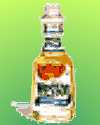 | On 24 Jan 1861, David Wesson was born, an American chemist who created Wesson Oil. He experimented with purifying a certain vegetable oil, and developed a system (1900) to make the pure oil palatable. This type of vegetable oil was the first used in the U.S. It is a versatile oil prized by chefs for its ability to allow the flavour of foods to come through. What vegetable oil did Wesson first create? What vegetable oil did Wesson first create? |
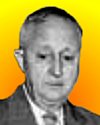 | On 14 Jan 1890, Rolla Neil Harger was born, an American toxicologist and biochemist who was at Indiana University when he invented the first successful machine for testing human blood alcohol content. What was the first human blood alcohol content testing machine called? What was the first human blood alcohol content testing machine called? |
| Deaths | |
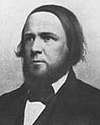 | Benjamin Silliman, Jr. (1816-1885) was an American chemist who reported on the potential uses of a new U.S. product, suggesting it especially for illumination. What product was the subject of his study? What product was the subject of his study? |
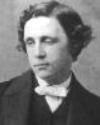 | An English logician, mathematician, photographer, and novelist (1832-1898) is especially remembered for his classic children�s stories. After graduating from Christ Church College, Oxford in 1854, he remained there, lecturing on mathematics and writing treatises until 1881. Can you name of this mathematician? Can you name of this mathematician? |
| Events | |
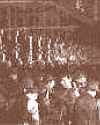 | On 14 Jan 1878 newest advance in assembly line production of “modern” cars was announced by a certain manufacturer. The new continuous motion method reduced assembly time of a car from over 12 hours to 93 minutes. Which manufacturer initiated the modern assembly line? Which manufacturer initiated the modern assembly line? |
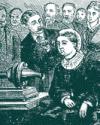 | On 14 Jan 1878, the first demonstration of Alexander Graham Bell's telephone to Queen Victoria at her Osborne House estate. When the Queen saw his telephone, she was much impressed, and ordered a private line to be laid between Osborne House and Buckingham Palace. Where, off the British mainland, was Queen Victoria's Osbourne House estate? Where, off the British mainland, was Queen Victoria's Osbourne House estate? |
| Answers |
| When you have your answers ready to all the questions above, you'll find all the information to check them, and more, on the January 14 web page of Today in Science History. Or, try this link first for just the brief answers. Fast answers for the previous newsletter for January 13: pancreas • a 1-mm-long soil roundworm • sawdust, linen or bark • England • decade including the year 1976 • pie pans thrown by truck drivers from the Frisbee Pie Co. of Connecticut. |
| Feedback |
 If you enjoy this newsletter, the website, or wish to offer encouragement or ideas, please send feedback by using your mail reader Reply button. If you enjoy this newsletter, the website, or wish to offer encouragement or ideas, please send feedback by using your mail reader Reply button. Your click on a StumbleUpon, Google+ or Facebook social button on the site webpages is also a welcome sign of appreciation. Thank you for using them. |
| Copyright |
| To find citations for quotations go to the corresponding webpage by clicking on the “quotes” balloon icon. Sources for the thumbnails appear on today's webpage with the corresponding item. � This newsletter is copyright 2014 by todayinsci.com. Please respect the Webmaster's wishes and do not put copies online of the Newsletter � or any Today in Science History webpage. (If you already have done so, please remove them. Thank you.) Offline use in education is encouraged such as a printout on a bulletin board, or projected for classroom viewing. Online, descriptive links to our pages are welcomed, as these will provide a reader with the most recent revisions, additions and/or corrections of a webpage. For any other copyright questions, please contact the Webmaster by using your mail reader Reply button. |
--
If you do not want to receive any more newsletters, Unsubscribe
To update your preferences and to unsubscribe visit this link


Δεν υπάρχουν σχόλια:
Δημοσίευση σχολίου